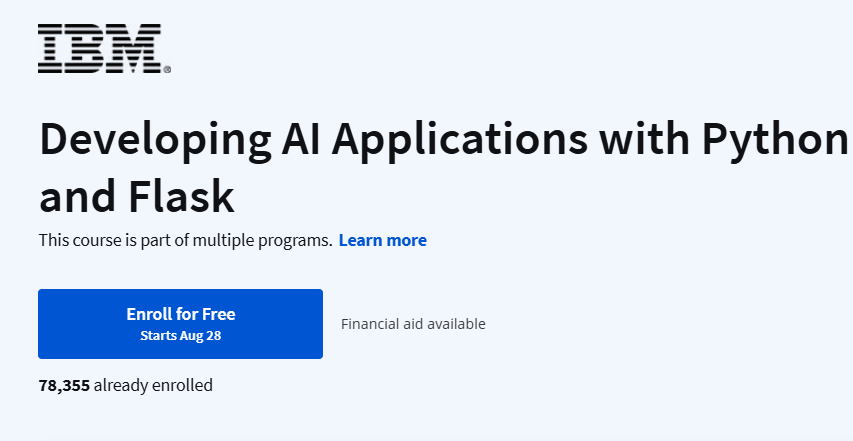Getting Started with Flask: Creating Your First Web Application
Introduction
What is Flask?
Flask is a micro web framework for Python, designed to be lightweight, easy to use, and flexible. It allows developers to quickly set up a web server, handle HTTP requests, and render dynamic content. Unlike larger frameworks like Django, Flask does not come with many built-in tools or components, giving developers more freedom to choose the best tools and libraries for their specific needs.
Why Choose Flask?
Flask is an excellent choice for beginners for several reasons:
- Simplicity and Minimalism: Flask's core philosophy is "less is more," providing a simple foundation with which you can build your application.
- Flexibility: It doesn't force you into a specific project structure, allowing you to choose the tools and technologies that best suit your needs.
- Extensive Documentation: Flask has comprehensive documentation and a large community, making it easier for beginners to find resources and support.
My Experience with the Coursera Project
The Coursera project "Flask for Beginners: Creating an Application" is designed as a hands-on, interactive learning experience. It provides a step-by-step guide to building a simple web application using Flask. Here's a quick overview of the key stages of the project:
Setting Up the Environment: The course starts by helping you set up your development environment with Python and Flask. You'll learn how to install Flask using
pipand create a virtual environment to manage dependencies.Creating a Basic Flask Application: You'll write your first Flask application by creating a simple "Hello, World!" web page. This involves understanding Flask's routing mechanism, which maps URLs to functions in your code.
Building Dynamic Content: The course then moves on to creating dynamic content with HTML templates and Jinja2, Flask's templating engine. You'll learn how to pass variables from your Python code to your HTML templates, making your web pages more interactive.
Handling User Input: One of the most critical parts of any web application is handling user input. The course covers how to create forms and handle data submissions securely, using Flask's built-in form-handling capabilities.
Deploying Your Application: Finally, you'll learn how to deploy your Flask application to the web so that it's accessible to anyone online. The course discusses various hosting options and provides a basic overview of deployment tools like Heroku.
Key Takeaways
- Understanding the Basics of Flask: The project gave me a solid foundation in Flask, from setting up a development environment to creating dynamic web pages.
- Building a Simple Web Application: By the end of the course, I had built a simple yet functional web application, reinforcing my understanding of web development fundamentals.
- Practical Experience with Deployment: Learning how to deploy a web application was an invaluable experience, giving me insights into real-world considerations when launching an app.
- Boosting Confidence: As someone new to Flask, this project boosted my confidence in working with Python web frameworks and opened the door to more advanced web development projects.
Tips for Beginners
- Start Small: Begin with a simple project to get familiar with Flask's core concepts.
- Read the Documentation: Flask's official documentation is an excellent resource. Take the time to read through it and understand the framework's capabilities.
- Experiment and Explore: Don’t be afraid to experiment with different features and libraries. Flask is highly extensible, and there are many tools you can integrate to enhance your application.
- Practice Deployment: Getting your application online can be one of the most rewarding parts of web development. Try deploying your project to a free platform like Heroku to gain practical experience.
Conclusion
The "Flask for Beginners: Creating an Application" project on Coursera is an excellent starting point for anyone interested in learning Flask and web development with Python. It offers a hands-on approach, allowing you to build a real web application while learning the essentials of web frameworks. If you are looking to expand your web development skills or just curious about Flask, I highly recommend giving this course a try.
Whether you're building a simple website or a complex web application, Flask is a powerful tool in the Python ecosystem that is worth exploring. Happy coding!
By taking this course, I gained a solid foundation in Flask and the confidence to dive deeper into web development.




















































%20in%20Finance).jpg)

.png)


.png)

.png)
.png)





.png)

.png)
%20in%20Finance).jpg)
.png)
.png)

.png)
.png)




.png)

.png)

.png)
.png)






